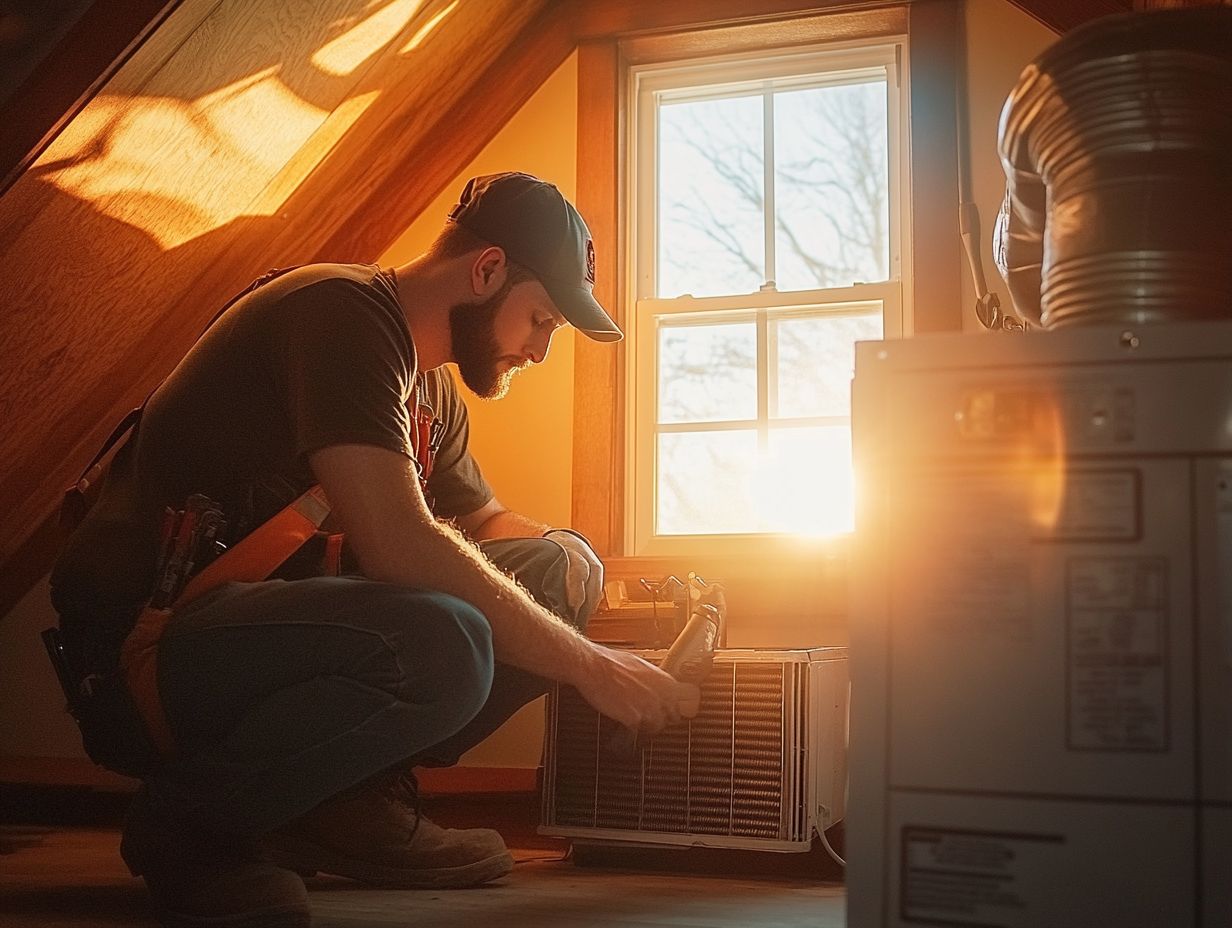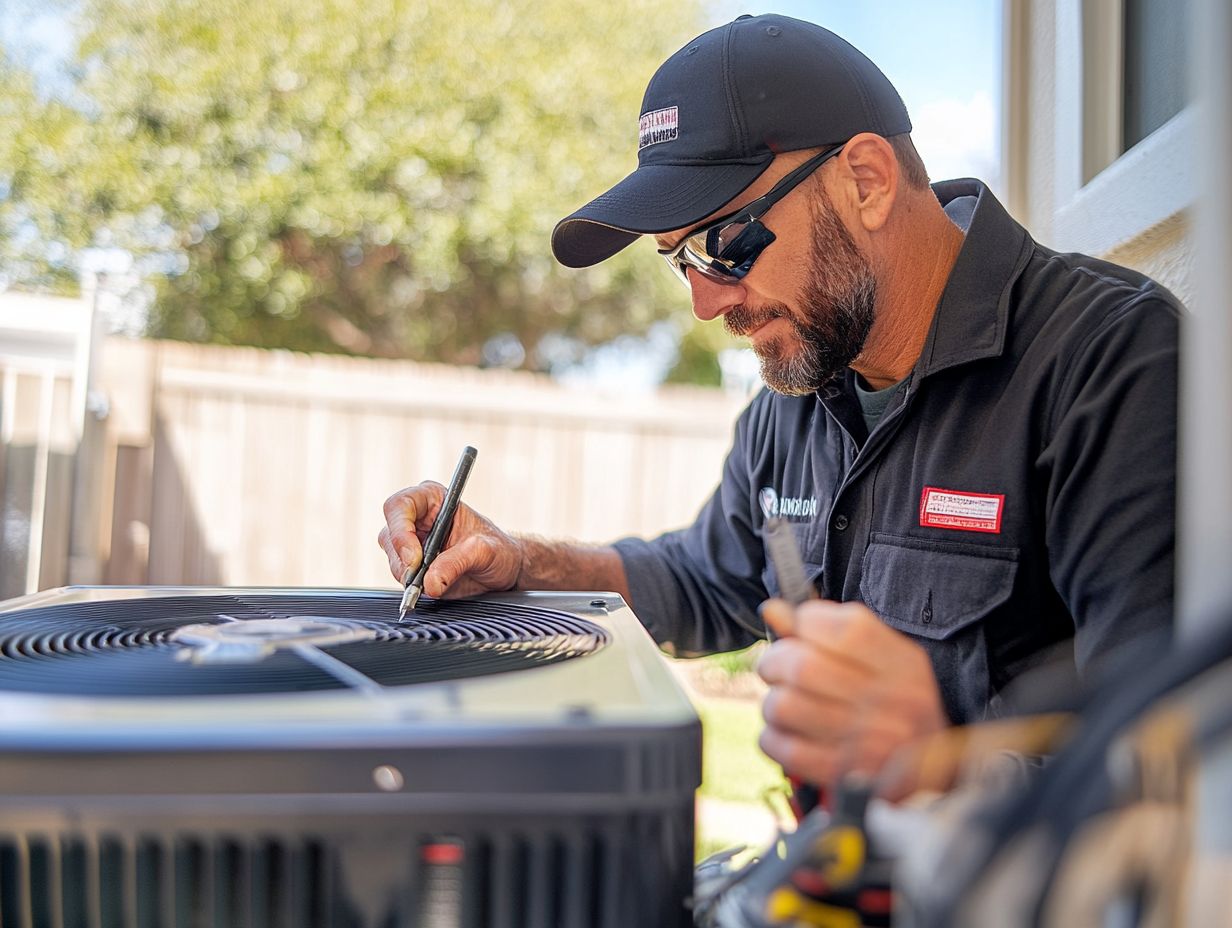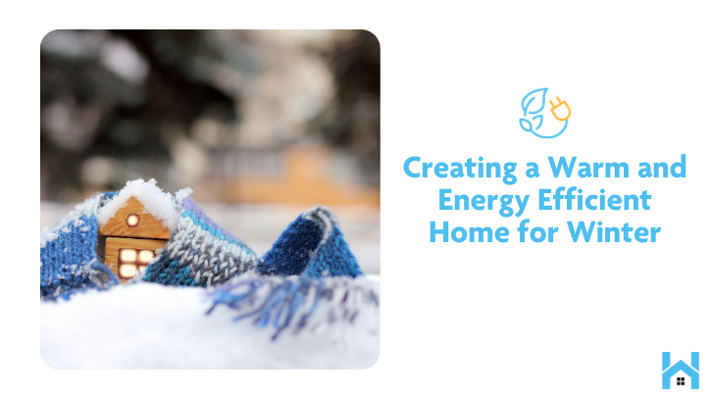Regarding maintaining a comfortable home, HVAC efficiency is essential—not only for your finances but also for the environment.
With energy costs on the rise and increasing concerns about sustainability, it becomes imperative to optimize your heating and cooling systems.
This article presents five practical tips to enhance HVAC efficiency, ranging from regular maintenance to the advantages of smart thermostats.
You will find that small adjustments can result in significant savings and a more home comfort living space.
What is HVAC Efficiency and Why is it Important?

HVAC efficiency pertains to the effectiveness of your heating, ventilation, and air conditioning systems, which directly influences both your comfort levels and energy expenses.
A well-functioning HVAC system is essential for maintaining a stable and pleasant indoor environment, as it regulates temperature and airflow throughout your home. Improved HVAC efficiency not only enhances overall comfort but also significantly decreases energy consumption, which in turn lowers the frequency and amount of your utility bills.
Conducting energy audits can help identify areas for improvement, allowing homeowners to adopt more sustainable practices that further reduce their carbon footprint. Investing in high-efficiency HVAC systems can deliver considerable long-term financial benefits while promoting environmental stewardship, all the while ensuring that occupants experience a consistently comfortable atmosphere.
Tip #1: Regular Maintenance and Inspections
Regular maintenance and inspections of your HVAC systems are crucial for achieving optimal performance and extending their lifespan. By arranging seasonal checkups with a professional, you can identify and resolve potential issues before they develop into costly repairs.
This proactive approach not only enhances the efficiency of your HVAC system but also improves indoor air quality, ensuring your home remains comfortable year-round. By incorporating maintenance tips into your routine, you can enjoy significant savings on energy bills while also prolonging the life of your equipment.
How Maintenance and Inspections Improve Efficiency

Routine maintenance and inspections are essential for enhancing HVAC efficiency, ensuring that systems operate at their best. Regularly changing air filters and checking refrigerant levels can significantly lower energy consumption while improving airflow and indoor air quality.
By addressing minor issues early—such as compressor maintenance and duct sealing—you can prevent major breakdowns and expensive repairs. This systematic approach not only enhances system performance but also contributes to overall cost savings on heating and cooling.
Plus these vital tasks, regular cleaning of coils and drain lines helps maintain optimal airflow and minimizes the risk of freezing or water damage. Scheduling annual tune-ups with a qualified technician ensures that each component functions efficiently and allows for the early detection of potential problems before they escalate.
This proactive attention to HVAC maintenance not only protects your investment but also guarantees a comfortable indoor environment. It reduces the likelihood of unexpected service interruptions and enhances reliability throughout the changing seasons.
Tip #2: Upgrading to a Smart Thermostat
Upgrading to a smart thermostat can truly transform the way you manage your home's heating and cooling, resulting in noteworthy energy savings. Smart thermostats offer programmable settings that allow you to optimize temperature control based on your schedule and personal preferences.
These innovative devices can learn your routines, automatically adjusting the temperature to reduce energy consumption when you’re not home while ensuring a comfortable environment when you return. By incorporating smart technology into your HVAC system, you can enhance efficiency and lower your utility bills.
How a Smart Thermostat Can Save Energy and Money

A smart thermostat can lead to significant energy savings by effectively managing the heating and cooling cycles of your HVAC system. By employing advanced HVAC technology, these devices optimize cooling expenses during the summer and heating costs in the winter.
This innovative technology learns from user behavior, enabling it to automatically adjust temperatures based on whether occupants are home or away. With features like geofencing and scheduling, homeowners can easily ensure that their heating and cooling systems operate at peak efficiency. To achieve maximum energy efficiency, it is essential to set the thermostat to recommended temperatures—approximately 78°F in summer and 68°F in winter—and to utilize zoning capabilities if they are available.
Additionally, regular maintenance, such as replacing air filters and ensuring proper insulation, enhances the effectiveness of smart thermostats. By adopting these strategies, individuals can make a meaningful contribution to energy conservation while enjoying improved comfort in their homes.
Tip #3: Proper Insulation and Sealing
Proper insulation and sealing play a vital role in enhancing HVAC efficiency and ensuring a comfortable indoor climate. When a home is insulated effectively, it minimizes air leaks that can lead to substantial energy loss and higher utility costs.
Implementing weatherstripping around doors and windows and upgrading to energy-efficient windows can further help reduce drafts and improve temperature regulation. By prioritizing insulation improvements, you can achieve better humidity control and foster a more energy-efficient living environment.
Why Insulation and Sealing are Crucial for Efficiency

Insulation and sealing play a vital role in maintaining HVAC efficiency, as they have a direct impact on air quality and energy consumption within your home. By effectively preventing air leaks, you can enhance humidity control and reduce the workload on your heating and cooling systems.
When your home is properly insulated, seasonal adjustments can be more effective, leading to a more consistent indoor climate and improved overall comfort. This proactive approach not only boosts energy efficiency but also fosters a healthier living environment.
Effective insulation minimizes the risk of temperature fluctuations, which can trigger unnecessary HVAC cycles and increase wear and tear on the system. When insulation is optimized, it not only helps lower energy costs but also contributes to a quieter home environment.
Additionally, sealing gaps around windows, doors, and ventilation systems prevents drafts and improves air quality, facilitating better distribution of conditioned air.
Consequently, focusing on insulation and sealing is essential for creating a sustainable and energy-efficient household, ultimately benefiting both the homeowner and the environment.
Tip #4: Using Natural Ventilation and Shade
Utilizing natural ventilation and shade can greatly reduce energy consumption while ensuring a comfortable indoor environment. By thoughtfully opening windows and employing cross-ventilation techniques, one can effectively cool their home without depending solely on air conditioning systems, which helps to lower cooling expenses.
Additionally, incorporating shade elements, such as awnings or strategically planted trees, can further block direct sunlight, decreasing heat gain and enhancing overall comfort. By adopting these eco-friendly practices, homeowners can achieve significant energy savings and improve their home's efficiency.
How Natural Ventilation and Shade Can Help Reduce Energy Usage
Natural ventilation and shade are highly effective tools for energy conservation that can enhance the cooling efficiency of HVAC systems. By allowing fresh air to circulate through your home, you can create a more comfortable indoor environment without overly relying on air conditioning. Utilizing shade effectively can lower indoor temperatures, which decreases the need for cooling and leads to significant energy savings. This not only helps manage humidity levels but also results in lower energy bills over time.
Implementing these strategies can greatly improve indoor air quality, fostering a healthier living environment. For example, strategically placed awnings and trees can deflect direct sunlight. When combined with cross-ventilation techniques, this approach can cool spaces efficiently. As a result, it reduces the load on cooling systems, enabling them to operate more effectively and extending their lifespan.
In commercial settings, leveraging natural airflow and shade enhances employee comfort and can lead to substantial savings on operational costs. This creates a win-win scenario for both productivity and sustainability.
Tip #5: Adjusting Temperature Settings
Adjusting temperature settings is a straightforward yet effective method to enhance HVAC efficiency and achieve optimal comfort in your home. By utilizing programmable settings on your thermostat, you can customize temperature regulation to align with your lifestyle, ensuring that your HVAC systems operate only when needed.
Implementing these energy-saving strategies can result in substantial savings on energy bills while also improving the overall performance of your HVAC systems. This approach is an essential component of energy-efficient upgrades for any home.
Optimal Temperature Settings for Efficiency and Comfort
Finding the optimal temperature settings for your HVAC systems is crucial for striking a balance between comfort and cost savings. Typically, setting your thermostat to around 78°F in the summer and 68°F in the winter can enhance energy efficiency and reduce utility expenses.
By effectively utilizing HVAC technology, you can create a comfortable indoor environment while also ensuring efficient energy use. Even small adjustments can lead to significant differences in your energy bills and overall home comfort.
During the transitional seasons, it’s wise to aim for a middle ground; setting the thermostat to approximately 70°F in spring and fall can foster a pleasant atmosphere without putting too much strain on your heating systems or cooling systems.
Moreover, incorporating programmable thermostats can allow for automatic adjustments, optimizing energy consumption throughout the day. This means that when you are away from home, the HVAC system can conserve energy, further boosting your savings.
In the end, adhering to these recommended temperatures not only promotes an eco-friendly lifestyle but also extends the lifespan of your HVAC system by preventing it from overworking during extreme weather conditions.
.2509031213252.webp)



